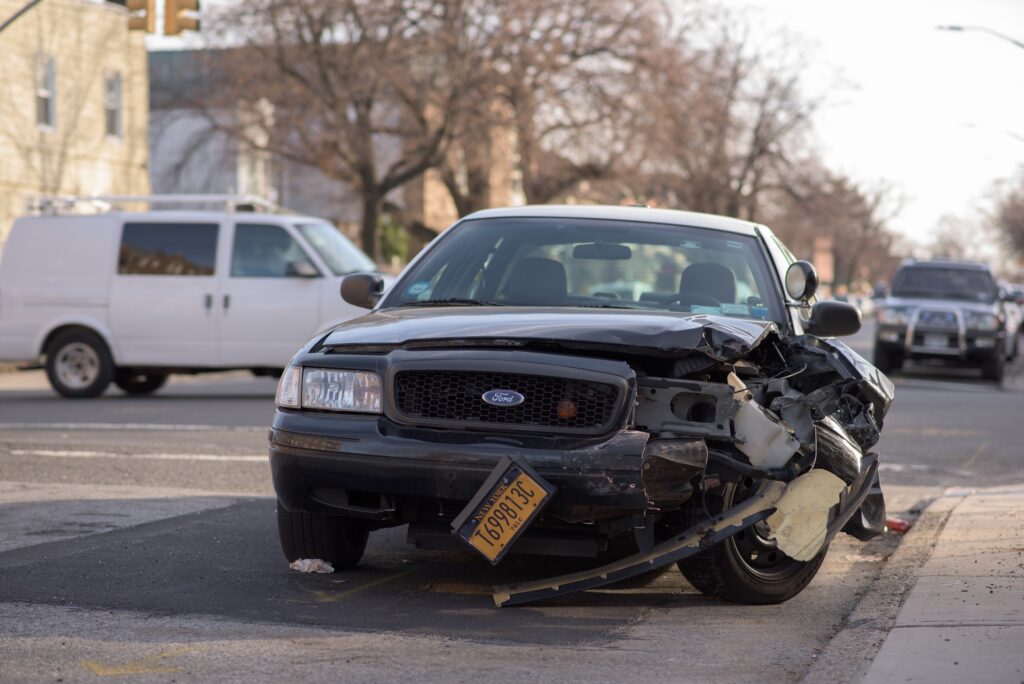
In our travels over the holidays and as weather continues to worsen, it’s likely that many of us will see at least one severe car accident. When we come across one, we may feel any combination of sadness and empathy for the folks involved, relief that it’s not us, annoyance at the delay, and an impulse to help. It’s this last bit I’d like to talk about, because wanting to help does nobody any good if it gets the helper hurt too. After all, one of the first rules is to put on your own oxygen mask first, because you can’t save others if you don’t save yourself first.
We start with one of the most difficult to accept ways of being useful at a car accident scene: keep driving. Keep going at a steady pace, making sure that you limit sudden stops or swerves, and that you stay out of the way of emergency vehicles and people who are on the street doing work for the victims. Like driving carefully in bad weather, the idea is drive defensively, to prevent additional accidents by leaving yourself plenty of room and watching who’s around you to guess what they might do instead of doing your best to see details of the accident. Humans are curious creatures and some amount of rubbernecking is normal, but we need to do our best not to let it take over our driving. Not only is it rude, it means you’re distracted and can rear-end a vehicle in front of you or have to stop so suddenly that you are hit instead. While you’re at it, pay attention for incoming police cars, ambulances, fire trucks, and tow trucks so that you stay out of their paths. That will help them get to the accident as quickly as possible so that the people involved can be treated and the vehicles cleared for the road to reopen. It doesn’t feel like much of anything at all, I know, but I promise both emergency services and other drivers will appreciate your efforts to keep traffic moving.
You may not be able to get your car past the accident scene, or really really not want to. In those cases, you might be able to help while staying safely inside. For instance, if you don’t see emergency services coming (or you witnessed the crash), you might want to call 911 to get them on their way. Remember, though, that dispatchers are a limited resource so be thoughtful about whether your call will alert them to something they don’t know about, or clog up their phone lines and attention. If you saw what happened and want to help by providing that information for investigation purposes, you may be better off waiting until the police show up or calling them later on their non-emergency line to give your statement. You can also park your car and turn on lights and blinkers to make the accident scene more visible. This becomes especially important when lighting or weather conditions, bends in the road, or similar vision barriers are in play, so that you can help others drive by safely. If your way forward is blocked, even just pulling your car well out of the way and not getting out of it can be good, because you aren’t interfering with rescue work and you aren’t becoming a new accident.
If you must get out, then be extra careful to keep in mind your own safety first. You need to pay close attention to what other cars are doing, so that you don’t become an extra victim. It’s distressingly common for another vehicle to come along and run into one of the cars stopped for the accident, pushing it into the people behind it, or to hit a person who is walking out from behind or between those stopped cars. Not everyone will be as courteous and careful as you will be when you drive by a crash, so take those folks into account if you leave your vehicle. Then while you’re out there, don’t just stand around and get in the way, thinking that more people on site is somehow helpful. Either remove yourself from the scene as much as possible, or do something useful. One of the reasons I recommend the Stop the Bleed program so highly is because it will teach you some of the skills that can be important in these types of circumstances. Expanding beyond that into more comprehensive first aid programs, and carrying appropriate medical supplies with you or in your vehicle, will enable you to manage the scene and treat injured people until professional help arrives. Part of that may – and perhaps should – include considering how to direct traffic around the accident. Flares, reflective hazard triangles, and bright flashlights all can direct emergency services towards the accident and keep other cars away. Having those in your car and knowing how to use them can be part of protecting accident victims as much as ensuring you stay safe while you do it.
I get it: none of us wants to be the kind of person who would turn away from a fellow human being in need of aid. Having compassion for someone who is hurt and wanting to help is normal, and even admirable. To do so productively, however, can be challenging. One of the ways we can do that is to expand our idea of what helping looks like. Sometimes, it’s not direct, hands-on aid so much as staying out of the way. At the same time, we need to contract our idea of what helping looks like, so that we don’t include scenarios where we become more of a hindrance if not our own tragedy entirely. Thinking through the circumstances where we might offer assistance, and ensuring that we have considered potential outcomes and consequences and prepared ourselves accordingly is vital not only for your own survival, but for best helping the folks around you.




